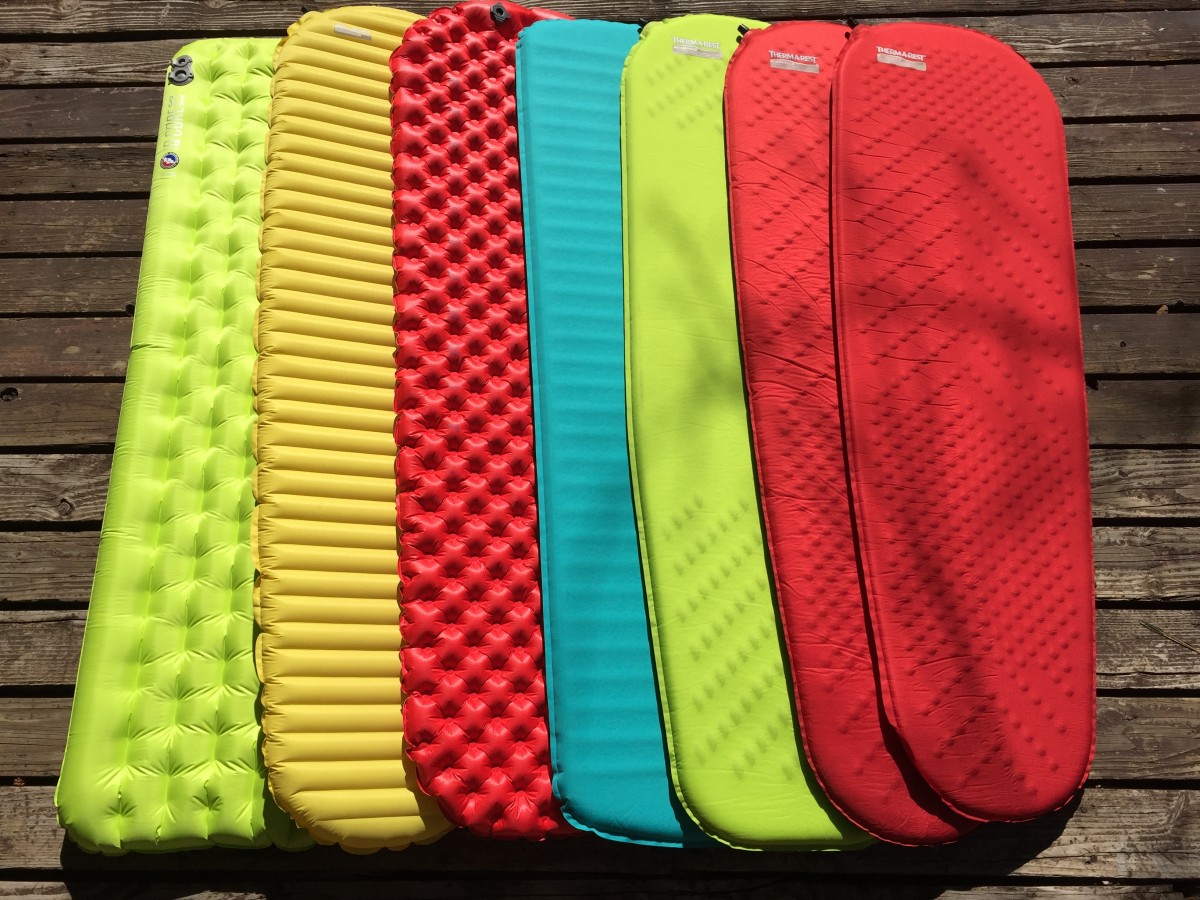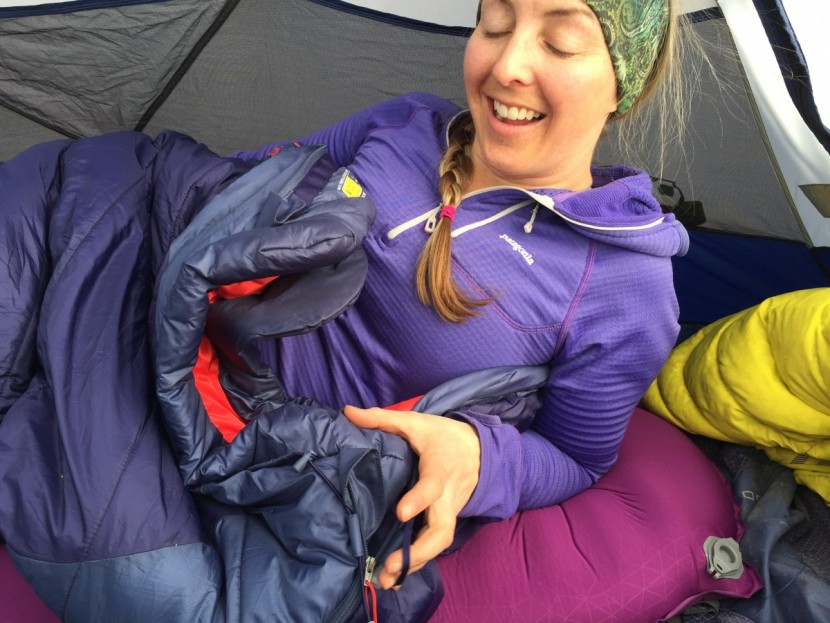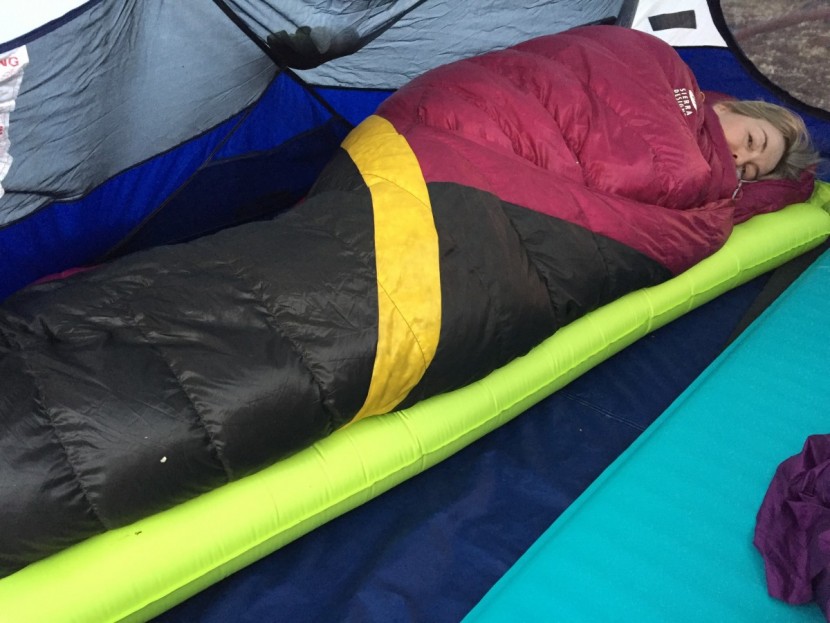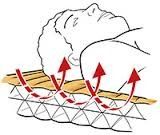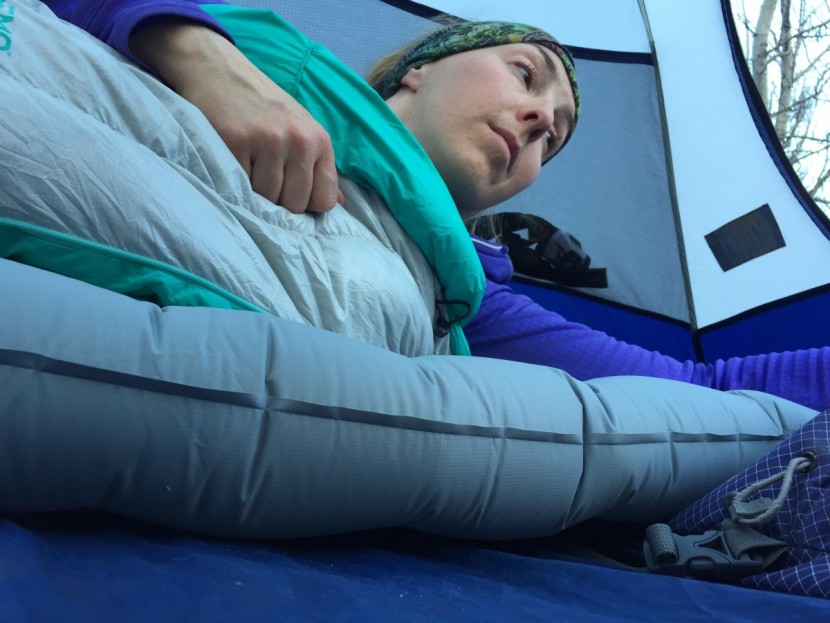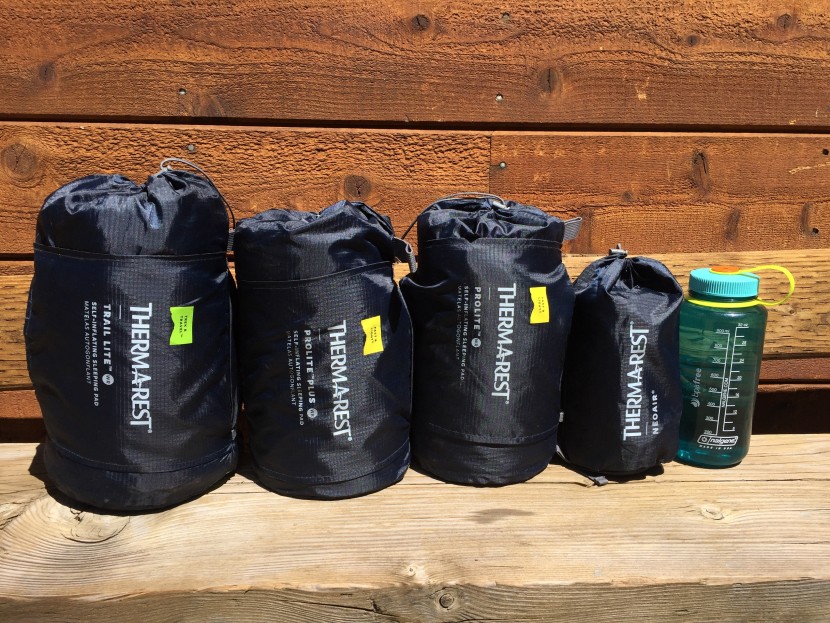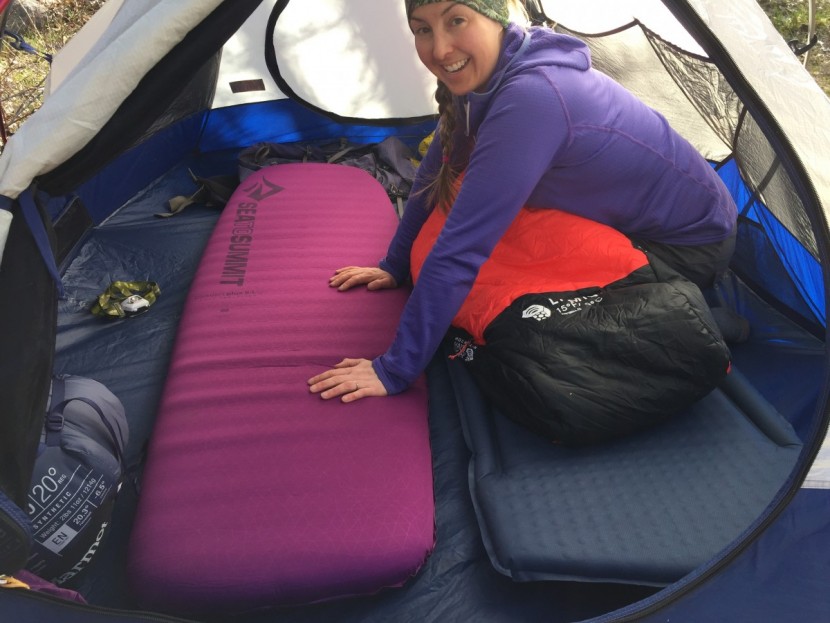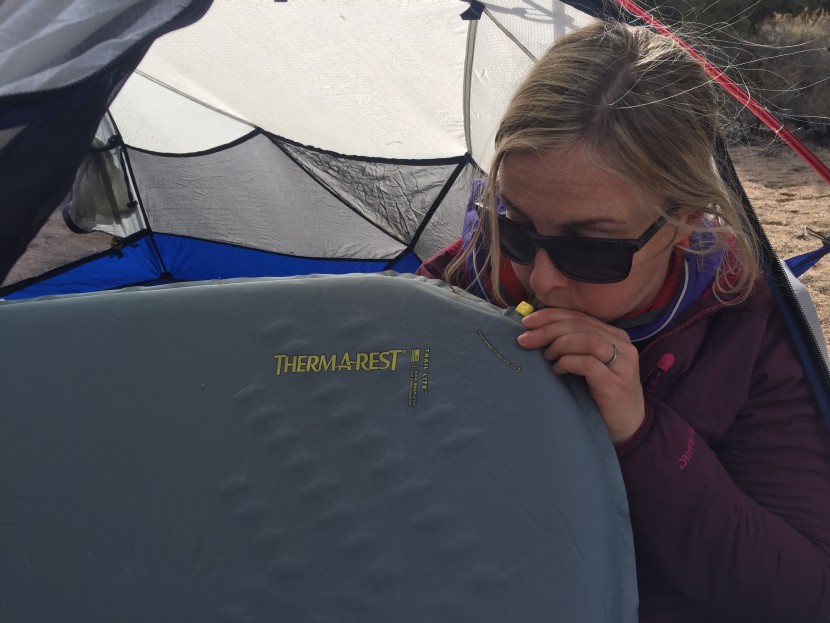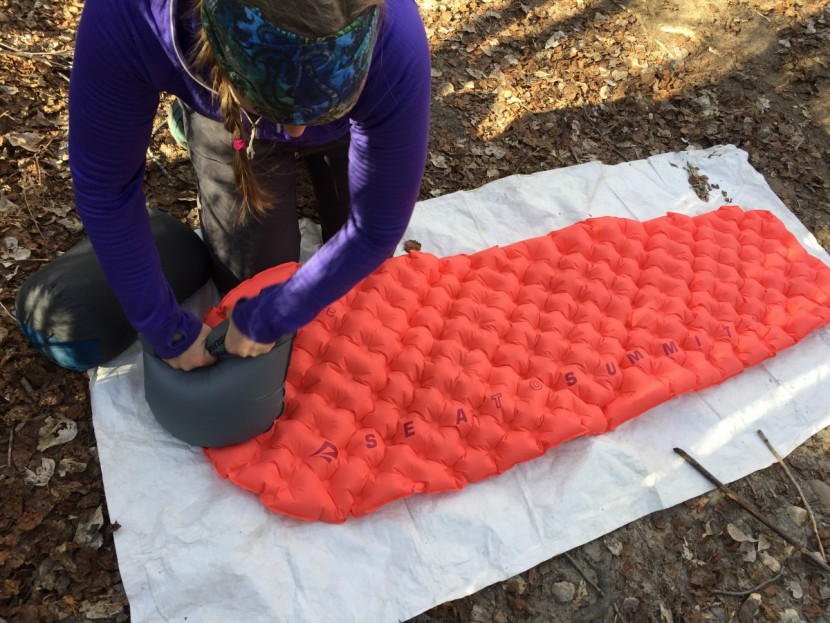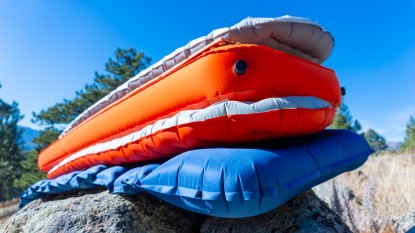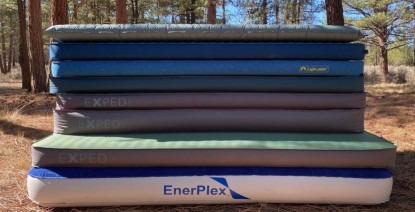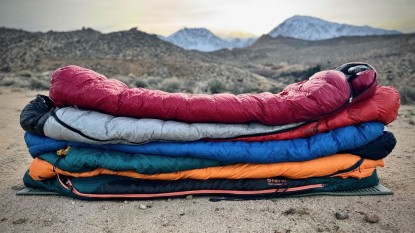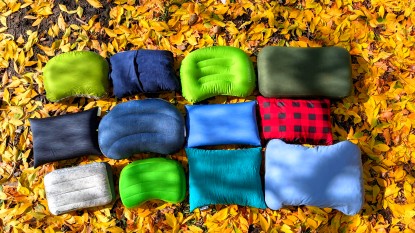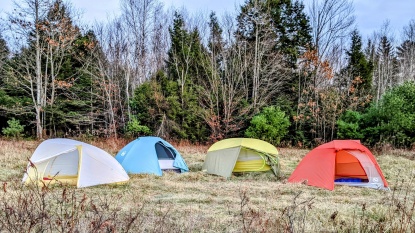Women's specific products are becoming a norm in the outdoor industry, and we're happy to say most that manufacturers are no longer using the “shrink it and pink it” strategy when creating women's products. When designed with intention, women's products are a brilliant choice and can help you become the best outdoor person you can be. Women's sleeping pads are a great addition to the outdoor market and will help you have a warm and comfortable night's sleep. Recently we've discovered that manufacturers are making their unisex products in smaller, women's specific sizes, so we have a broader range of products to choose from. To find out what we thought about all the women's specific pads we tested, check out our Women's Sleeping Pad Review.
Why Choose a Women's Specific Pad?
Do you want to maximize your weight-to-warmth ratio while going lighter and reducing your pack size? Why wouldn't you? Choosing a woman's specific product is a smart and easy way to maximize your gear without increasing the weight of your pack. Typically, women are physiologically different from men; often, we feel the cold differently, and it usually manifests in cold hands and feet. Sleeping pad manufacturers have taken this into account when designing pads specifically for women and have made them smaller to fit the average woman's frame (about 5'5 or 66 inches). They have added extra insulation in areas where we get colder, specifically the foot and torso areas. We like that Sea to Summit women's specific pads have a more thoughtful shape that is wider in the hips and narrower in the shoulders, giving us space where we need it. Want to up your game even more? Check out our women's sleeping bag review to get yourself a high-performing sleeping bag tailored to your gender.
This time around, we dabbled in unisex pads that are sized for the average woman, 64-66 inches, which will save us weight and increase our choices if we're interested in something that isn't a “woman's specific pad”.
A Man Using a Woman's Sleeping Pad??!!
For guys who are in that 5'5 range, why wouldn't you get a women's model? That's right; men are cluing into the benefits of women's pads as well. They fit small frames better, have a smaller packed size, and are almost always warmer than the equivalent men's version. Even taller men are looking twice at woman's versions for these same reasons. It is easy to supplement the length of a pad by putting items like backpacks or ropes at your feet for insulation from the ground.
The Basics
Sleeping pads can be used any time you're sleeping on the ground, from kids' sleepovers to Denali expeditions. The women's pads we reviewed are designed specifically for camping and backpacking purposes. If you are strictly car camping, you may want to check out our Car Camping Mattress Review for plusher and more comfortable models. If you are a taller lady, or you just want to shop around a little more, check out our unisex review. Below we will tell you what you need to know to choose the right pad for you.
Construction Types
Most sleeping pad manufacturers use some combination of air and foam or other insulating materials to create their mattresses. The models in this review had two basic construction types. The majority were self-inflating, where the open-cell foam is glued to the interior of the pad. That can be quite warm, but the more foam in the pad, the bulkier and heavier it becomes. Pads of this type can be very comfortable, warm, and even be inexpensive.
Weight and Packed Size
If you are participating in self-propelled activities like bike touring or backpacking, every ounce you are carrying counts and should be a significant consideration of your purchase. In this category, the NeoAir XLite can't be beaten. It packs down smaller than a one-liter Nalgene bottle and weighs less than a pound (12 ounces). The Big Agnes Q-Core SLX Petite is almost as small, but not as warm as the NeoAir. If weight and packed size are less of a concern, comfort will be a high priority. The REI AirRail Plus is a very comfortable mattress, and you can still carry this model around for short stints. Self-inflating mattresses tend to be slightly more durable, so if you're looking for something you can do yoga on in the mornings outside of your tent (although we do not recommend this!), you may want to go with a high denier fabric like the one found on the Therm-a-Rest Trail Lite - Women's.
Warmth
Your sleeping pad doesn't have to be the warmest; it just depends on where and when you will be using it. The most important duty of your pad is to insulate you from the ground. If you are sleeping on snow or out in late fall, the ground will be colder, and you will want a one that can insulate you from these colder temperatures. This is where R-value comes in. The higher the R-value, the warmer the pad. If your R-value is not necessarily high enough for winter camping on its own, you could purchase a closed-cell foam pad like the Therm-A-Rest Z-Lite Sol to use underneath your inflatable pad to up your R-value for 4 season camping.
Women's pads generally have a higher R-value because we are known to be colder sleepers. Most manufacturers will up the amount of foam or insulation in the foot and torso areas, where we get the coldest. If you're choosing a unisex pad that is sized for a woman (66 inches), be sure to check out how warm it is, as it may not be as warm as you're used to.
New R-Value Testing Standards
The outdoor industry has come together to agree on an industry standard for R-value testing of sleeping pads. The American Society for Testing and Materials has published these standards, and most manufacturers in the US have agreed to use these ASTM standards to determine the R-value of their products. This was implemented in November of 2019, and all the manufacturers in this review seem to have gotten on board. These testing standards have shaken up some of the products in this review's R-values. It has dropped the rating of many of the foam insulated pads, and significantly increased the NeoAir's warmth rating. To learn more about how and why check out this article from Outside Magazine.
R-value is a term originally used in the construction business and is related to home insulation ratings. It calculates how much heat will move through a particular wall area, depending on the temperature difference between the indoor and outdoor air. In this case, it estimates how much heat will be lost to the ground, or how much cold will move up through the pad to the sleeper.
Manufacturer's ratings are always based on a fully inflated pad and will benefit side sleepers less because their weight is not distributed evenly on the pad (although with a woman's pad there is more insulation in the torso area, which will help compensate for this).
We have found that manufacturers are hesitant to make a strict correlation between R-values and outside temperatures and will instead give a range of temperatures for comfort levels for each R-value rating (see the diagram below). However, from the personal experience of our testers, pads with R-values below around three are recommended for 3-season use only. Depending on your cold tolerance and if you're sleeping on snow, the higher the R-value, the better. For example, we would like a set up like the Therm-a-Rest ProLite Plus - Women's with an R-value of 4.2, paired with a foam pad, R-value 2.6, when we are winter camping. For reference, a pad with an R-value of 5.0 is five times warmer than a pad with an R-value of 1.0.
We've come across manufacturers who are not assigning an R-Value (Big Agnes and Nemo) to their pad and instead are just giving it a temperature rating. We find this somewhat frustrating as it's harder to compare these pads to ones that do have an R-value assigned.
Durability
If you have an air mattress, one thing you don't want is for it to get a leak in it! There is a spectrum of durability in the products we tested. The NeoAir's materials are delicate but have stood the test of years of use. The tougher denier materials of most of the self-inflating pads we tested are quite durable, and we're not too concerned about those. Generally, the higher the Denier number, the tougher the material will be (and heavier). We think the newer valve systems are less prone to leaking and failure than the older twist close valves. Therm-a-Rest has finally updated their valve system to be one-way for easier inflation and are more durable, less prone to leaks.
Inflation Method
Many of the pads we tested are “self-inflating”. All this means is that when you lay out your sleeping pad and open the valve, a certain amount of air will eventually be sucked into the pad. It will by no means inflate it to maximum capacity. Manufacturers acknowledge this and make no claims to the contrary. If you want your self-inflating pad to be completely rigid and full, you will need to add a certain number of breaths to make it so. We like to fill our pads all the way up, lay down on them, and then let a certain amount of air out of the valve until it feels comfortable.
Many of the products in our review are not self-inflating, including the NeoAir. However, because most of these pads are big and thick and will leave you light-headed trying to fill them up, most companies have started to include a proprietary pump sack. These inflation methods are helpful because they prevent moisture from entering your mattress, which is a bonus when you are camping in below-freezing temperatures (as this can damage your air mattress). These sacks do add additional weight, but if you have lower lung-capacity may be super helpful.
Packing It Up
A common struggle with all air mattresses is getting it to pack down to the size it came in or getting it into its original stuff sack. We have discovered the trick to this.
- 1. Fold your mattress in half lengthwise with the valve open and squeeze as much air out as you can.
- 2. Start rolling from the bottom towards the valve. Once you have completely rolled it up, close the valve.
- 3. Repeat step 2 and completely roll your mattress again, with the valve closed.
- 4. There should be additional air that gets pushed up to the top near the valve — quickly open the valve and roll out the remaining air. This should result in a tightly rolled air mattress with no remaining air in it!
Now pads are coming with gaping valve openings that will help you deflate and re-pack your mattress easily. The Big Agnes Q-Core SLX is a massive boat of a pad that packs down to a tiny size, with little effort.
Storing Your Pad
If you are not using your pad for a while (even a few days), it will increase its longevity if you store it properly. Therm-A-Rest recommends spreading out your mattress as much as you can and storing it with the valve open so that any moisture can escape and dry out. Check out the videos below for Therm-A-Rest care instructions and storing advice.

